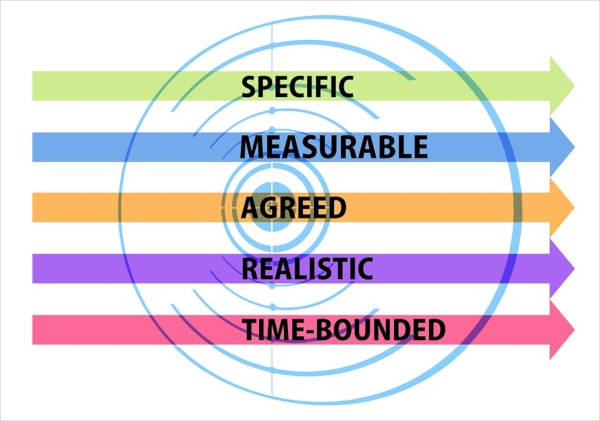There is just no denying how vital it is to incorporate social media into any marketing strategy in 2018. If you have no social media footprint in the present day, then you risk missing out on an incredibly large market population, not to mention any quick and easy to pull off advertising or promotional opportunities. If you are new to business and aren’t quite sure yet of how you can build up your own social media marketing strategy from the get go, then you’ve come to the right place. Take a look at the tips below and see for yourself just how you can get started.
1. Set goals for your social media marketing that will align with your business goals

At the heart of every tactic or strategy ever produced is a goal in mind. Social media is no different. If you want to get started, this should be the first thing to do. Come up with a goal for you to reach, but take note that it does not have to be just any goal. Preferably, it also needs to align with whatever you want to achieve with your social media business overall. Since social media is just one facet of your overall strategy, then this makes perfect sense.
2. Incorporate S.M.A.R.T. into your goal-planning

There is a problem that will come with having no goals: you will have no way of measuring your level of success or your return on investment. To ensure that your current goals will work out in the best way possible, you may turn to S.M.A.R.T. for your troubles. Not sure what that is? It is quite simple; S.M.A.R.T. stands for specific, measurable, attainable, relevant, and timely. This is how you measure up your goals because if they aren’t any of what has been written above, then you cannot be guaranteed any form of success either.
3. Select your social media platforms carefully

Now that you have dealt with your goals, the next tip to focus on should center around the specific social media platforms that your business needs. To do this, you must first be aware of where your audience is. It wouldn’t make sense to not be on the same network as them. Define who your audience are then make a list of platforms (at least three to five) that are popular with them. Once you have done this, you can proceed to plan and create content that are best suited for your various social media platforms.
4. Make sure to track meaningful metrics

When it comes to metrics, you need to know that there are differences between those that can be considered ‘vanity metrics’ and metrics that provide genuine value for the business. The former will be things that include ‘likes’ on Facebook, ‘retweets’ on Twitter, among others. While they are no doubt wonderful to get, you ought to put more focus on things like your generated leads, your conversion rate, and referrals. Doing this will involve carefully keeping an eye out for multiple channels, which can be a lot of tough yet fulfilling work.
5. Look for and gather as much real world data as possible

When coming up with your social media marketing strategy, it is wise not to stick to any assumptions. As strong as your ‘instincts’ may be about certain things, like an example of believing Facebook is better for find and reaching baby boomers in comparison to millenials, you must always attempt to back these beliefs up with real world data. In doing so, you will learn that, for the example above, the initial assumption is wrong and millennials still outnumber baby boomers on Facebook. Question whatever it is may be think and gather the appropriate data. The success of your strategy will be a much likelier outcome for it.
6. Do some research on the competition

Whether your strategy is based on social media or not, you knew this was coming. Whatever business you may be engaged in, it is always a necessity to scout the competition. Odds are, they already have their own social media marketing strategies. Take the time to look into what they are doing and see if there is anything you can learn from it. Don’t copy what they got, adapt and see if you can come up with something a lot better. Or put your own spin on it. Analyze what works best for them and what doesn’t.
7. Get involved in the creation of a social media content calendar

With all the data you have gathered from real world factors such as where your audience is and what your competitors are doing, the next logical step would be to put the focus on your own content. Since the sharing of great content is so essential, an equally important thing to do would be developing a plan in place to share it all. This is where the social media content calendar design comes into play. Having this allows you to account for time spent in interacting with your audience and the ever useful scheduling of posts, which will be talked about some more in just a short while.
8. Invest in highly effective social media management tools

The last tip that you can use to help you in developing a successful social media marketing strategy is going to be the use of any social media management tools. Without anything like this, most marketers are in danger of facing constant burnouts. Having tools at your disposal can allow you to successfully scale your own efforts with relative ease. If you need a specific benefit, then you can look no further than the fantastic ability to have your content scheduled ahead of time. That alone has tremendous strategic and tactical value, allowing it to come hand in hand with all your researched data and any well-made content.
Related Posts
The Best New Portfolio sites, March 2023
Best Poster Designs 2023: Ideas and Tips
Hit and Miss of Olympic Logo Designs from 1924 till 2023
10 Iconic Moments Photographed in 2023 Rio Olympics
Top 5 Logo Design Trends of 2023
2023 Packaging Design Pentaward Winners
Digital Design Trends for 2023
Best Travel Apps for 2023
9 Script Fonts for 2023
10 Best Free Fonts for 2023
10 Best Mobile Games of 2023
Logo Design Strategies for 2023
Top 9 Web Design Trends for 2023
10 Most Popular Graphic Design Trends of 2023
Visual Design Trends to Look Out in 2023
